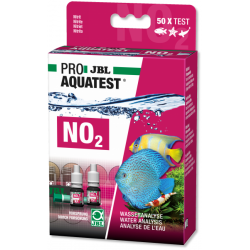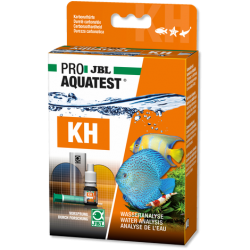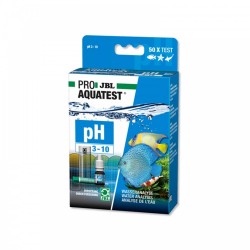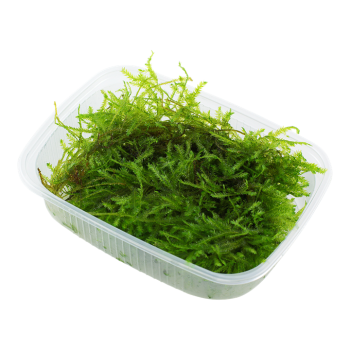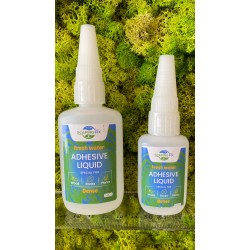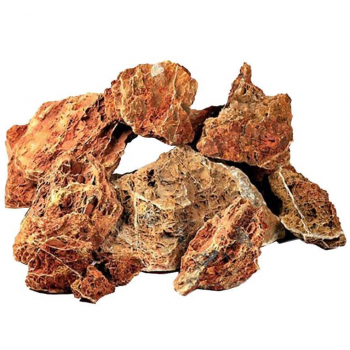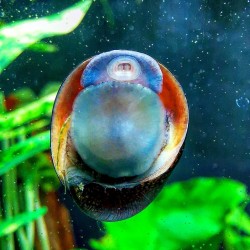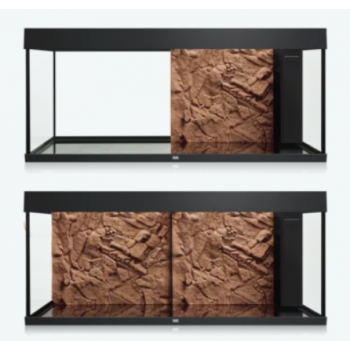PROAQUATEST COMBISET Plus NH4 Water quality test case
Features and properties:
- Simple and safe control of water parameters in aquariums
- Baby-proof reagent bottles, waterproof plastic case
- Add reagents to the water sample, compare with the color table
- PH value, carbonate hardness, ammonium/ammonia, nitrites, nitrates and CO2
You will earn 30.6 Arca Coins in Arca Coins when you purchase this product. You can convert Arca Coins into vouchers to pay for your future orders.
JBL PROAQUATEST COMBISET Plus NH4 is a case with several tests to verify water quality. To be used for running water and fresh water aquariums.
Water is not just water. Rain water also absorbs pollutants and once infiltrated in the aquifers it enriches other substances, not all suitable for use in aquarium. The constant monitoring of water values in the aquarium, especially during the preparation of a new one, is the key to a successful aquarium. With JBL PROAQUATEST COMBISET Plus NH4 has the ability to quickly and accurately determine the most important water values directly at your home. Thanks to the instructions for the very detailed use provided, with tips and tips, checking the parameters of the water will be a children's game. In the case you will find everything you need, including reagent bottles, glass tubes, dosing syringe, colorimetric cards and protocol cards. Additional reagents can be purchased separately.
In the case you will find the following tests:
JBL ProAqua Test KH
Depending on where it comes from, water can contain several amounts of mineral salts, a fact that also depends on the type of soil. A large part of the dissolved salts is represented by hydrogencarbonate of alkaline-terrosis metals. Hydrocarbonates form together with carbonates and carbon dioxide (CO2 ) an important buffer system that prevents high hazardous shocks of pH in water. The carbonate hardness (KH) measured indicates the total concentration of hydrogencarbonate in the water and can therefore, in rare cases where there are mainly alkaline hydrogencarbonates such as to e.g. in the lakes of East Africa, be higher than the total hardness that respects only alkaline-terrosis salts. Most fishes and fresh water plants in the aquarium can be successfully treated in the presence of a carbonate hardness of about 5-16 °dH. For optimal fertilization with CO2 instead the carbonate hardness should not be found under 5 °dH. Also in the garden pond a carbonate hardness of at least 5 °dH should be maintained. In case of CO2 deficiency aquatic plants, especially algae, consume with their fast assimilation hydrogencarbonate during photosynthesis (biogenic decalcification). With this they bring pH to dangerous heights for fishes (over 10).
JBL ProAqua Test pH 3-10
Maintaining the correct pH value as constant as possible is an important prerequisite for the well-being of all aquarium inhabitants. In particular, sudden fluctuations should be avoided. In addition, many dissolved substances in water are subject to variations depending on the pH value. For example, the amount of CO2 that can be dissolved in water is directly related to the pH value. The pH value can therefore act as a simple control variable for the regulation of fertilization systems with CO2, provided that there are no other acids in the water that influence the pH value (e.g. moisture acids) as well as CO2. The optimum concentration of CO2 for plants and harmless for fish is reached at a pH value of about 6,8-7,3. Carbonate hardness should not be less than 4° dH. The optimal pH value to maintain most freshwater fish and plants is in the neutral range around 7. However, there are also freshwater fish that need slightly acidic water or alkaline. For precise measurements of the pH value, there is the JBL PRO AQUATEST pH 6.0-7.6, for fresh water aquariums, which is adapted to its pH ranges, and JBL PRO AQUATEST pH 7.4-9.0 for marine water aquariums and garden ponds. For marine organisms, the optimal pH values are around 8.2. Especially in marine aquariums with invertebrates, calcium bicarbonate consumption can decrease the pH value (and carbonate hardness). When taking care of fish from fresh water slightly alkaline, e.g. Lake Malawi or Lake Tanganyika, we recommend pH values around 8-8.5. For koi carps and other fish, the optimal pH values are between 7.5-8.5. In the garden pond, but especially in aquariums, in case of CO2 deficiency, algae in particular can consume hydrogencarbonate present in the water through their rapid assimilation during photosynthesis (biogenic decalcification) and therefore bring the pH value to levels such as are dangerous for fishes (over 10).
JBL FOR AQUATEST NH4
The decomposition of all organic substances (food and vegetable residues, fish excrement) in the aquarium and in the pond takes place through the so-called nitrogen cycle. Proteins are converted into ammonium and this in nitrite and nitrate. Some bacteria are responsible for this process. By measuring the individual intermediate levels of ammonium, nitrite and nitrate, you can make statements on the "function" of the system. For example, drugs used to treat fish diseases can damage beneficial purifying bacteria, leading to an increase in ammonium and/or nitrite levels. As a rule, ammonium will not be measurable in a well kept aquarium with an efficient biological filter. Ammonia is a nutrient for plants and is not toxic for low concentration fish. Depending on the pH value, however, the ammonium may form toxic ammonia (BH3). For this reason, a pH measurement should always be performed with ammonium measurement.
JBL FOR THE PURPOSES OF THIS REGULATION:
Similar to ammonia, nitrite is a powerful poison for fish. Depending on the sensitivity of fish species, concentrations between 0.5 and 1 mg/l (ppm) may already be fatal. Seawater fish and fry are more sensitive than adult fish.
JBL AQUATEST NO3
Normally ammonia and nitrite should not accumulate; if that happens, there may be a problem with bacterial balance. A constantly increasing nitrate content and a low or undetectable ammonium and nitrite content are synonymous with a well-functioning bacterial balance, but at the same time it indicates an insufficient balance between fish (nitrogen source) and plants (consumers). Excessively high levels of nitrates promote unwanted growth of algae if phosphate is available in water as well as nitrite. The nitrate content should therefore not exceed 30 mg/l in fresh water and 20 mg/l in sea water. In aquariums with many plants and few fish, the opposite can happen: nitrates become a deficiency factor and must be reintegrated so that plants thrive.
24090











